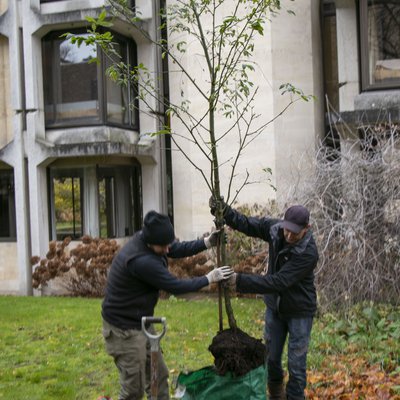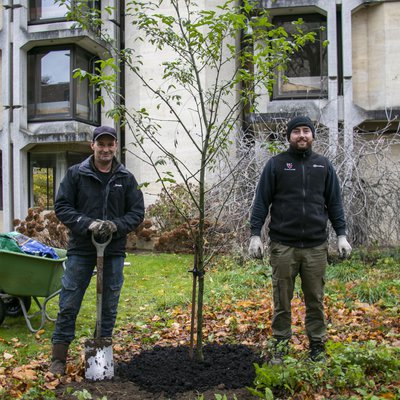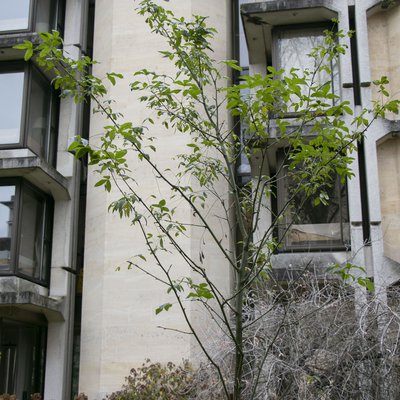Tree planted at St John's as part of the Big Climate Fightback
 23 November to 1 December is the National Tree Council's National Tree Week. Alongside this, the Woodland Trust has organised The Big Climate Fightback, the UK's largest mass tree planting campaign, with the aims of encouraging recognition of the importance of trees and woodlands in the fight against climate change, and getting more than a million people to pledge to plant a tree in the lead up to a mass day of planting across the country on Saturday 30 November. November is the start of the traditional tree planting season, while 30 November is also Tree Charter Day, a national day celebrating trees and woods.
23 November to 1 December is the National Tree Council's National Tree Week. Alongside this, the Woodland Trust has organised The Big Climate Fightback, the UK's largest mass tree planting campaign, with the aims of encouraging recognition of the importance of trees and woodlands in the fight against climate change, and getting more than a million people to pledge to plant a tree in the lead up to a mass day of planting across the country on Saturday 30 November. November is the start of the traditional tree planting season, while 30 November is also Tree Charter Day, a national day celebrating trees and woods.
Planted by Head Gardener Phil Shefford and Gardener Peter Hall, the tree planted at St John's is a Laburnum x watereri 'Vossii', commonly known as Voss's laburnum. Originating in the Netherlands in the late 19th Century, the tree is a hybrid of the Scotch laburnum and the common laburnum, and in the early summer will be covered in beautiful trailing yellow flowers.
Phil Shefford said, "Planting trees and watching them grow into fine specimens over the years has been very satisfying for me. Unfortunately I have had to witness trees being removed, which I planted years ago, for the new Study Centre project. I accept that this happens, and it does all over the world, so it's important that we try to replace what we have lost.
"Trees help slow the rate of global warming by absorbing Carbon Dioxide, as well as releasing Oxygen and providing food and shelter for wildlife. We are very fortunate at St John's that we have such a lovely garden with a variety of beautiful trees for all to enjoy."
The gardens at St John's are already home to a wide variety of trees and other plants, providing a peaceful green space in the city centre for our staff and students throughout the year. Among the most notable features are two large copper beeches, a cork oak and a paper-bark maple, while, over in the middle of Kendrew Quad, the fern-leaved beech is perhaps the finest tree in the gardens.
The College's gardens were first laid out in the 16th Century, on the site that is now Canterbury Quad, and beyond them was the Grove. Following the building of Canterbury Quad, the enlarged Grove was laid out as three distinct gardens: the President's Garden, the Masters' Garden or outer grove (the original Grove) and the Bachelors' garden, or inner grove. The outer grove, now the site of the lawn, consisted of trees randomly scattered around a lawn.
In the early 1700s the gardens were remodelled in the fashionable, more formal French style, but in 1772-8 the clipped trees and gravel pathways were replaced with a more naturalistic arrangement, which remains to this day - the outer grove laid out as a lawn surrounded by trees, and the inner lawn planted with trees and shrubs. You can find out more about the history of our gardens on our website.
We are very grateful to our team of dedicated gardeners for all the work they do to keep our gardens and quads so well-maintained, and we look forward to seeing our newest tree grow alongside the established trees found throughout the rest of our gardens.
Read more about our initiatives to reduce our environmental impact.



